The scenes seen at the Port-au-Prince airport are yet another example of the migratory crisis that many Haitians are experiencing.
Dozens of people they ran desperate for his belongings, which were left on the taxiway without any identification.
Others tried to re-enter the plane in which they had arrived, while some threw shoes and other objects at the aircraft. Three US immigration agents were injured.
All were migrants who were deported after their entry or asylum applications were rejected in the North American country.
They were part of a group of up to 13,000 Haitians who were under a border bridge between Mexico and the US, in a precarious camp, waiting for their requests to be processed by US authorities.
Many tried to flee the scene to avoid being taken back to Haiti, causing clashes and persecution by the Border Patrol.
However, what has happened in recent days responds to a migratory crisis that has been developing for a long time.
Here we leave you five keys.
1. Most do not come directly from Haiti
Haiti has experienced crises in the last two decades that have prevented it from overcoming its prolonged poverty.
Two major earthquakes, several hurricanes, political and economic instability, violence in the streets and even the recent assassination of President Jovenal Moïse have hampered any development project, both national and multinational.
The UN estimates that almost 4 million Haitians, out of about 11.5 million, are food insecure. One fifth of the population, about two million people, hasbeen forced to emigrate.
The lack of options to travel to the United States has led thousands of Haitians to seek refuge in other countries in recent years, mainly those who can access without a visa in Latin Americaa.
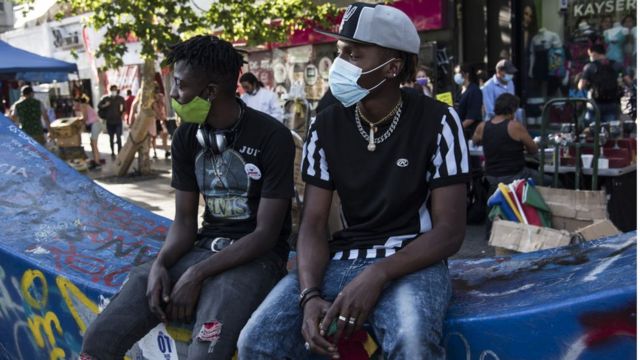
In fact, Chile and Brazil They are the main countries from which most of the thousands of Haitian migrants left for the US in recent months, said Mexican Foreign Minister Marcelo Ebrard this Wednesday.
Haitians have joined migrants of other nationalities who are fleeing in record numbers.
Mexico registered the arrival of 147,000 undocumented immigrants between January and August, triple that of 2020, while the US authorities detained some 212,000 migrants in July alone, the first time the 200,000 barrier has been exceeded in 21 years.
2. Why now?
Although many Haitians have tried to establish themselves in Latin American countries, those who have left for the United States indicate that they had to do so for the lack of a good job or legal status.
At the Mexican border, Jenny Joseph, a 37-year-old Haitian, told the agency Reuters who had lived for two years in Chile, but left because he could never obtain documents to be in the country.
She explained that her cousin was deported back to Haiti with his family after three days in the US camp, so she had decided “to stay away from the American side.”
To that is added the beliefthat under Joe Biden’s government immigration policy would be less hard, yla reduction of some controls frontiers in Latin American countries imposed during the covid-19 pandemic.
Upon arrival at the White House, Biden He promised to be more “humane” towards migrants and those seeking asylum than Republican predecessor Donald Trump, although since his administration he has tried to discourage migrants from crossing the border on numerous occasions.
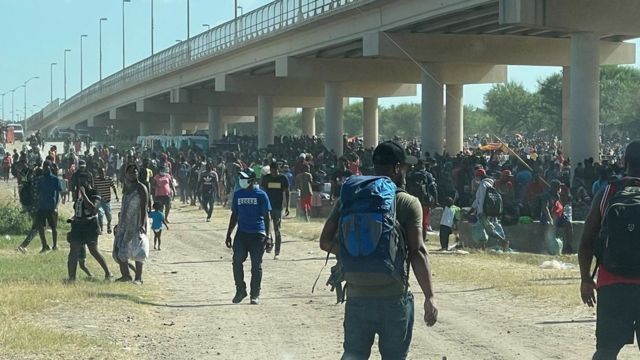
According to the Mexican Foreign Minister, the current flow of Haitians “is due to the fact that the United States (…) extended the TPS program until 2023”, which provides temporary protection status to who are already in the US
Some Haitians were encouraged to travel to the US, but “They are cheating”, I consider Ebrard.
The US government has warned that there are no facilities to access the country.
From the focus of the problem, in the city of Del Rio, Texas, the Secretary of Homeland Security of the United States, Alejandro Mayorkas, stressed on Monday that the borders are “not open” and that migrants “should not undertake the dangerous journey” there.
3. Title 42 of the United States.
The anti-immigration policy of President Donald Trump reduced the possibilities of requesting asylum in the United States and the coronavirus pandemic further limited the options to access the country.
The Biden government has maintained the activation by its predecessor of what is known as Title 42, an exception in the country’s health law, which enables restrict the entry of foreigners by landway for health reasons (even for those who have a visa).
Bottom line: the border is closed for non-essential activities and that includes asylum or refugee seekers.

The rule also allows Customs and Border Protection (CBP) authorities to immediate deportation of undocumented aliens. More than 940,000 undocumented detainees have been expelled since last year.
This policy has been denounced by international organizations, since puts those fleeing their country at risk for fear of losing your life.
“The summary and massive expulsions of people that are currently being carried out under Title 42, without detecting the protection needs, are incompatible with international law“, Said this Wednesday the United Nations High Commissioner for Refugees, Filippo Grandi.
In a statement, he criticized the “Deplorable conditions” that Haitians pass on the border with Mexico, after the images of the precarious camp under the bridge and the controversial performance of border agents on horseback chasing migrants with reins.
The White House itself denounced the behavior of the border authorities, considering the images “terrible”, and an investigation was opened in this regard.
4. The crisis in other Latin American borders
What is happening in the United States is only part of the alarming situation that exists in other borders of the continent due to the massive arrival of migrants.
The Colombian Ombudsman’s Office reported that there are some 19,000 migrants (a record number) stranded in the city of Necoclí, waiting for a turn to cross to Panama, a country that allows the entry of 250 per day for health reasons.
Most of them are Haitians, but there are also migrants from Venezuela, Cuba and countries in Africa. The poor conditions in which they await have generated sanitary problems for adults and children, in addition to lack of food.
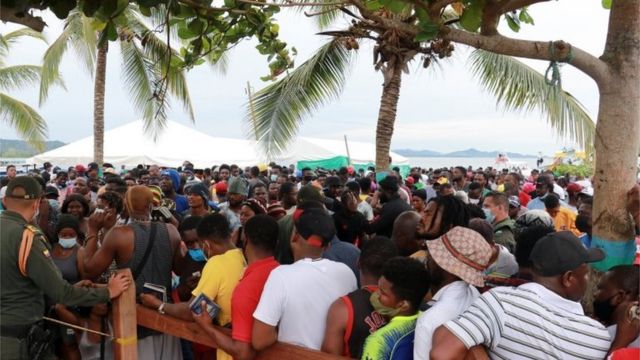
From there they make a dangerous journey through the jungles and swamps of the Darien to continue through the countries of Central America.
And on the border of Mexico and Guatemala another problem has been generated in recent weeks.
In coordination with the US, the Mexican government has applied tighter controls on migrants entering the country at that border, which has led to confrontations with migrants who complain about the slowness of the process.
There have even been violent confrontations, one of them in early September in which Haitian migrants were beaten by Mexican immigration agents, now under investigation.
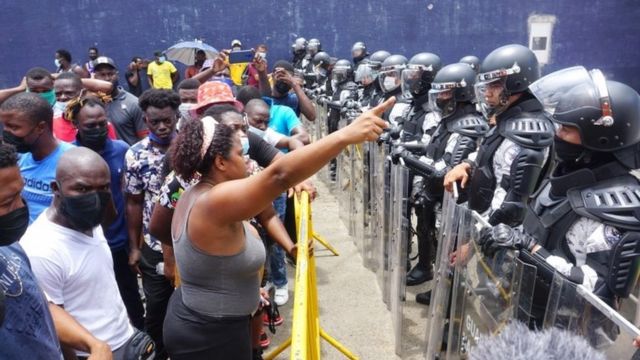
“We are desperate,” 28-year-old Maximil Marcadieu, who spent almost two months traveling from Chile only to be trapped with thousands of people under a bridge on the US-Mexico border.
“Many people dream of going to the United States and now they are deporting everyone,” he lamented.
5. What alternative do they have?
Haitians do not know what could happen, but they are clear that they do not want to return to Haiti.
Marie Chickel, 45, with two 10-year-old children, explained that she could not sleep in the Ciudad Acuña, Mexico camp, because there were rumors of a raid by Mexican immigration agents.
He traveled from Chile thinking he could enter the United States and is now in uncertainty.
“If I can’t cross [a EE.UU.] and if i can find papers here to work, to send my children to school, I can thank God, “he told the AFP agency between sobs.
Other Haitians on the American side no They were informed from that would be returned to their country, which caused the ire of those who have arrived in Port-au-Prince in a surprising way.
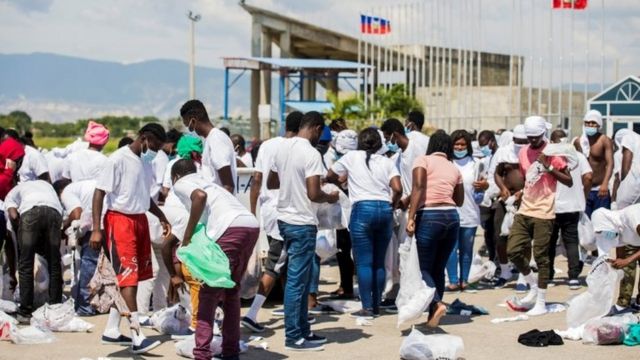
“They didn’t even tell us what they were doing,” Sonia Piard told the newspaper through tears. The Washington Post.
“They said our names and said they would take us to another place. We did not know that we were going to return to Haiti. No one told us that we were going to return to Haiti. We need to go back to Chile, but now we have no money or a home. What will happen to my children? ”He lamented.
Given the magnitude of the problem, Foreign Minister Ebrard, US Secretary of State Anthony Blinken and other officials from Central American countries will meet this Thursday in the framework of the UN General Assembly to discuss the situation. .
“We have to have an answer, we think, of a regional nature and with the support also of the United Nations Organization to support that the situation in Haiti can improve as soon as possible,” said Ebrard.
eltiempolatino.com